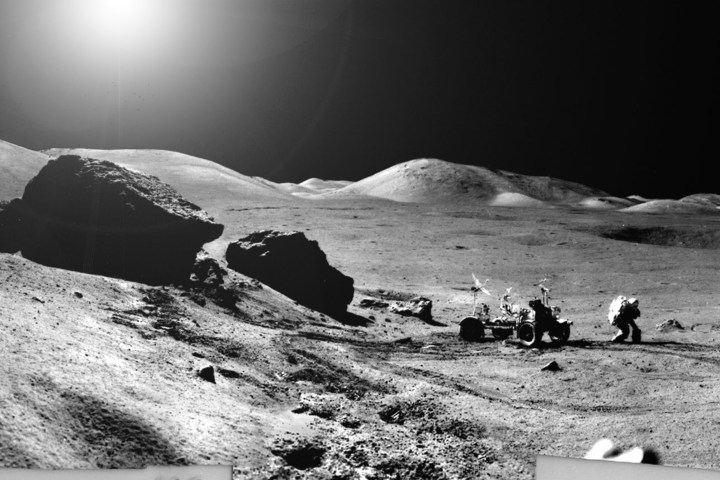
Mankind hasn’t left Earth since the Apollo 17 mission in 1972. We have maintained a continuous presence on the International Space Station for two decades, which is its own incredible achievement, but we haven’t gone beyond low Earth orbit and onto to the moon or further into our solar system for nearly 50 years.
But this year, we made big strides in returning to crewed space missions and exploring beyond our planet. Leaving the Earth is no easy feat, but we’re getting there. Here’s a quick recap of the small steps and giant leaps that mankind made in 2020, and that will help us usher in a new era of crewed space exploration in the near future.
8. India joins crewed space exploration efforts
Currently, the only nations with active human spaceflight programs are Russia, the U.S., and China. But that looks set to change, with India ramping up its spaceflight program this year. The Indian Space Research Organisation (IRSO) had wanted to test its upcoming Gaganyaan crew vehicle as early as next year, with aims to carry its first astronauts on an orbital test flight in 2022. However, delays of one year are expected to this date due to the coronavirus pandemic.
Gaganyaan will carry three crew members for missions of up to seven days and will be taken into orbit by a heavy launch rocket, GSLV MkIII, which is currently being developed for the mission.
7. New rockets to launch humans further than ever before

Both NASA and SpaceX are working on rockets to launch humans as well, with their Space Launch System and Starship rockets respectively. The Space Launch System (SLS) rocket stage has been assembled at NASA’s facilities and is currently in the process of being tested. Once complete, the 212-feet-tall stage will produce 2 million pounds of thrust and will carry NASA astronauts to the moon under the Artemis mission. With that achieved, the aim is to use the rockets to carry humans further than ever before — to Mars.
SpaceX’s stunning Starship has captured the world’s attention since its design was unveiled last year. This year has been a busy one for prototyping and testing, with the rocket just recently reaching an altitude of 40,000 feet and performing a unique flip maneuver to come in to land. The course of testing isn’t always smooth though, and the prototype came to an explosive end. Still, it’s looking like SpaceX will be ready to launch humans in the Starship soon, with ambitious plans for uncrewed missions to Mars as early as 2024.
6. Making oxygen on Mars

One of the big challenges of a crewed mission to Mars is how to get all the resources astronauts will need, like food, water, and oxygen. They could carry these materials with them, but they are heavy which makes them difficult to launch. Trying to carry everything needed could set a mission back by a decade.
So the current plan is to use an approach called in-situ resource utilization. The idea is to find ways to make use of the resources that are available on another planet to create the things we need.
That’s why NASA’s Perseverance rover, which is currently on its way to Mars and is scheduled to land in a couple of months, is carrying an experiment called MOXIE (Mars Oxygen In-Situ Resource Utilization Experiment). This takes in carbon dioxide which is abundant in the martian atmosphere and turns it into oxygen. If this small test version of MOXIE works, we’ll have found a way to create the oxygen needed for astronauts to survive on another planet.
5. Water on the moon
In the same vein, NASA wants to send astronauts to explore the moon for extended periods but this means they’ll need resources. There has been debate about whether there might be water on the moon for years, and this year we got our answer: There is water in the lunar soil, even on the side of the moon exposed to sunlight.
That means it may be possible to process the soil to extract the water, which would be an invaluable resource for future lunar explorers.
4. Longest stay in space by a woman

NASA astronaut Christina Koch finished her run at the International Space Station in February this year, having spent 328 consecutive days in space. That means she holds the record for the longest single-duration spaceflight by a woman, passing the previous record of 289 days set by Peggy Whitson in 2017. Koch also hit the headlines for participating in the first all-female spacewalk along with her colleague Jessica Mier.
With NASA’s aim to send the first woman to the moon under its Artemis program, Koch said she was proud to be an inspiration to young girls who are interested in science, and she acknowledged the importance of female space pioneers like Sally Ride and Evelyn Boyd Granville in forging the path for women to become involved in space exploration.
3. Space tourism is coming
For good or ill, space tourism is on its way. It may cost hundreds of thousands of dollars for a single flight, or millions for a trip to the International Space Station, but soon the mega-rich will be able to pay to experience spaceflight. Virgin Galactic will likely be the first company to carry a paying passenger on a suborbital flight in its SpaceShipTwo craft, although the most recent test of the craft didn’t go as planned.
Other companies have announced their intentions to move into the space tourism market as well, including SpaceX and Jeff Bezos’s Blue Origin, which recently unveiled its space tourism crew capsule.
2. Artemis picks up speed
NASA has set its sight on returning to the moon under its Artemis program. With a new rocket and a new capsule, the agency is determined to send a new crew to the moon, including the first woman to make the journey. It recently announced its Artemis Team of 18 astronauts from whom the crew will be selected, and has shared its vision for creating a long-term base where humans could live for more than a month at a time on the lunar surface.
The aim is to send a crew to the moon by 2024, though in truth this date looks doubtful. Incoming U.S. President Joe Biden has pledged his support for the Artemis mission, so it looks like it will still go ahead, but he has not discussed a date yet.
1. A new capsule for carrying humans into space

History was made this summer when two NASA test flight pilots, Bob Behnken and Doug Hurley, visited the International Space Station in the brand-new SpaceX Crew Dragon capsule. The successful crewed test flight of the capsule marked the first time astronauts launched from the U.S. since the Space Shuttle program ended in 2011.
With the Crew Dragon now in service for NASA, carrying its first operational mission to the ISS last month, a new era of crewed spaceflight is underway. SpaceX’s capsule could soon be joined by Boeing’s Starliner capsule as well, which is set for a crewed test flight to the ISS next year. After a gap of nearly a decade, NASA now has the capabilities to launch its astronauts into space once again.



